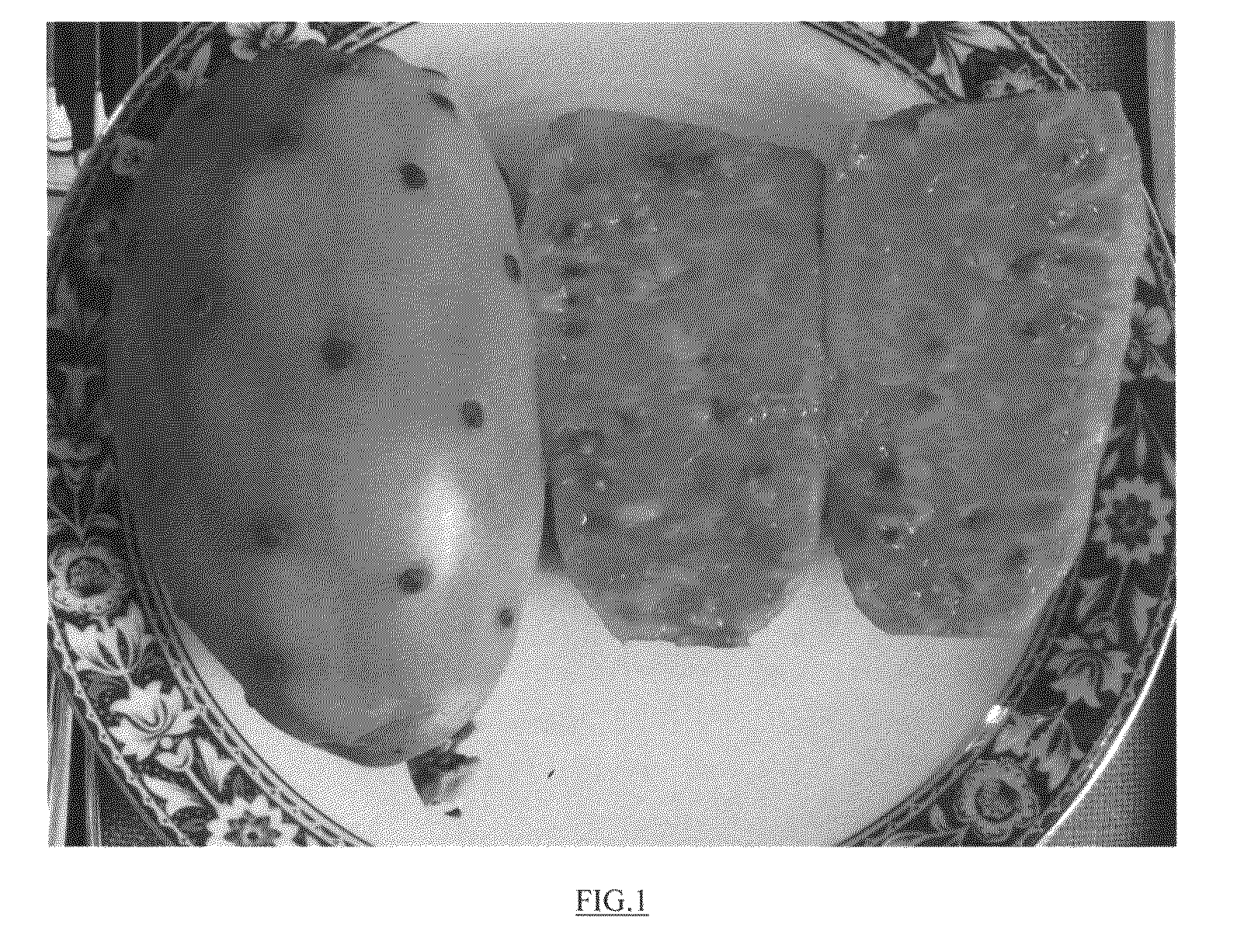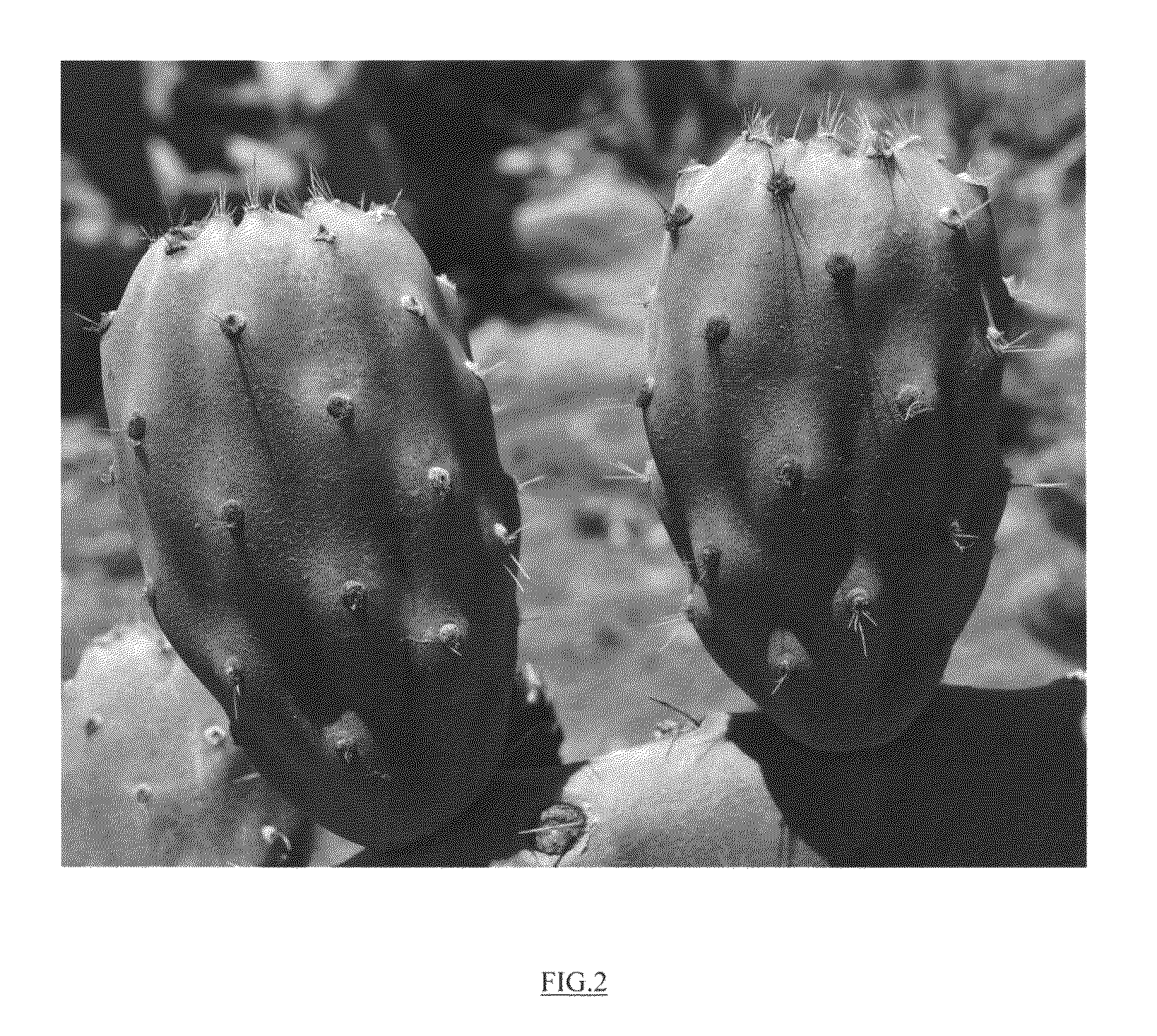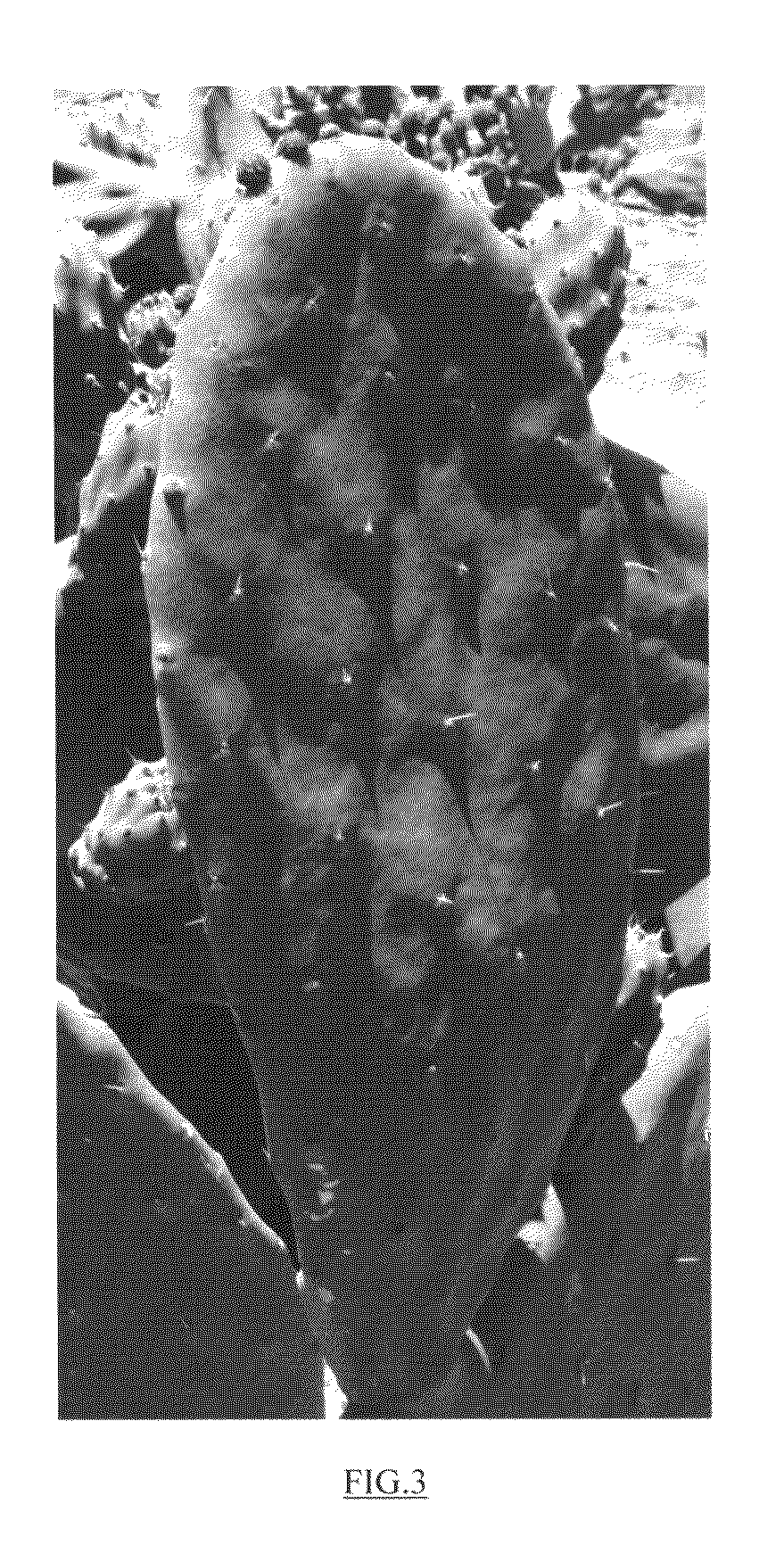Cactus pear variety named DAR 1-27-24 Orange
a technology of cactus pear and orange, which is applied in the field of cactus pear variety named dar 12724 orange, can solve the problems of not using federal or state-sponsored research funding in the development of these materials, preventing their cultivation, and not providing data, and achieves the effect of greater fruit firmness
- Summary
- Abstract
- Description
- Claims
- Application Information
AI Technical Summary
Benefits of technology
Problems solved by technology
Method used
Image
Examples
Embodiment Construction
The color chart used in this specification follows The Royal Horticultural Society Color Chart year 1996. The fruits have a medium elliptic shape. At optimal harvest conditions, the external peel color ranges from 171B to 168B, while the interior edible portion of the fruit ranges from 34A to 40B. Other red and purple varieties are too soft if harvested when 100% of the fruit surface has the red or pink color and must be harvested when only 50-60% of the fruit is covered with this reddish / purple color. In contrast, due to the high firmness, this variety can be harvested when 95% of external peel surface is orange. There are about 48 areoles per fruit in which the number of glochids per areola greater than 2 mm in length is about 3. The maximum length of glochids greater than 2 mm in length is about 8 mm as can be seen in FIG. 2. There are fewer than 100 glochids per areole less than 1 mm in length. There is no pubescence. According to the UPOV classification, the stalk length is med...
PUM
 Login to View More
Login to View More Abstract
Description
Claims
Application Information
 Login to View More
Login to View More - R&D
- Intellectual Property
- Life Sciences
- Materials
- Tech Scout
- Unparalleled Data Quality
- Higher Quality Content
- 60% Fewer Hallucinations
Browse by: Latest US Patents, China's latest patents, Technical Efficacy Thesaurus, Application Domain, Technology Topic, Popular Technical Reports.
© 2025 PatSnap. All rights reserved.Legal|Privacy policy|Modern Slavery Act Transparency Statement|Sitemap|About US| Contact US: help@patsnap.com



